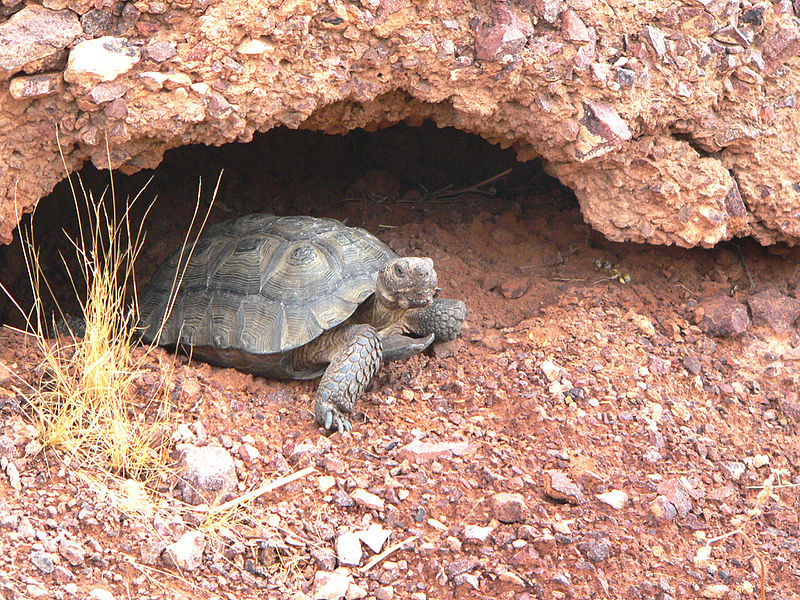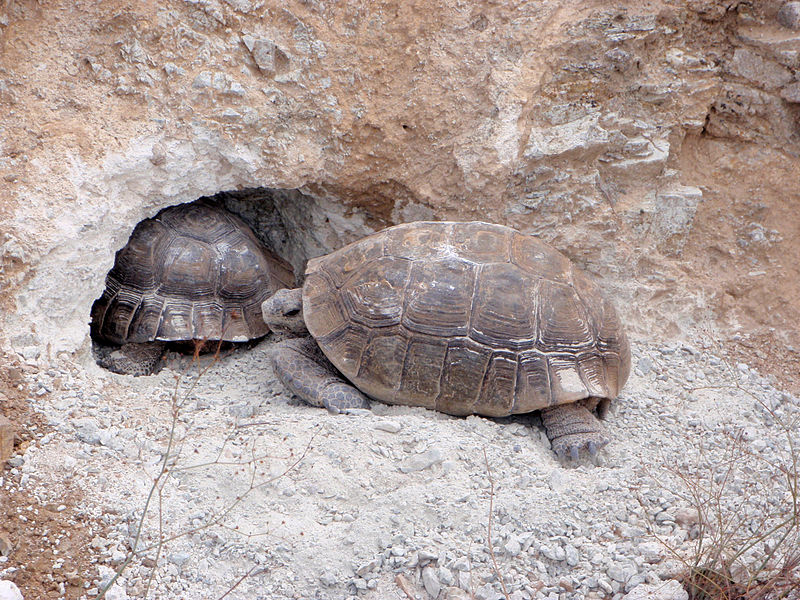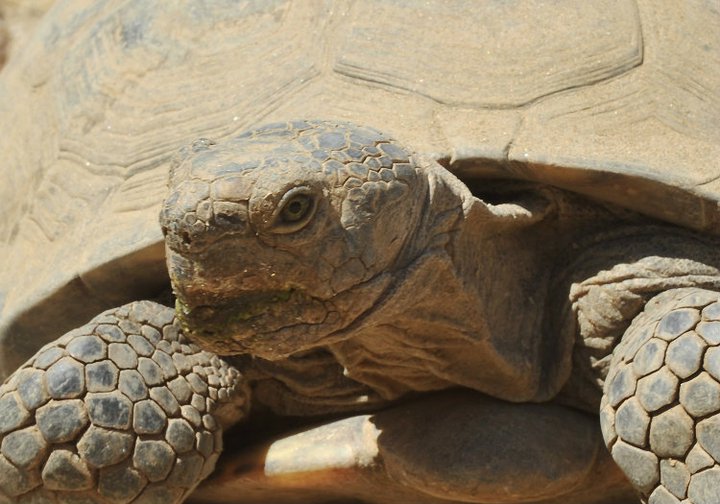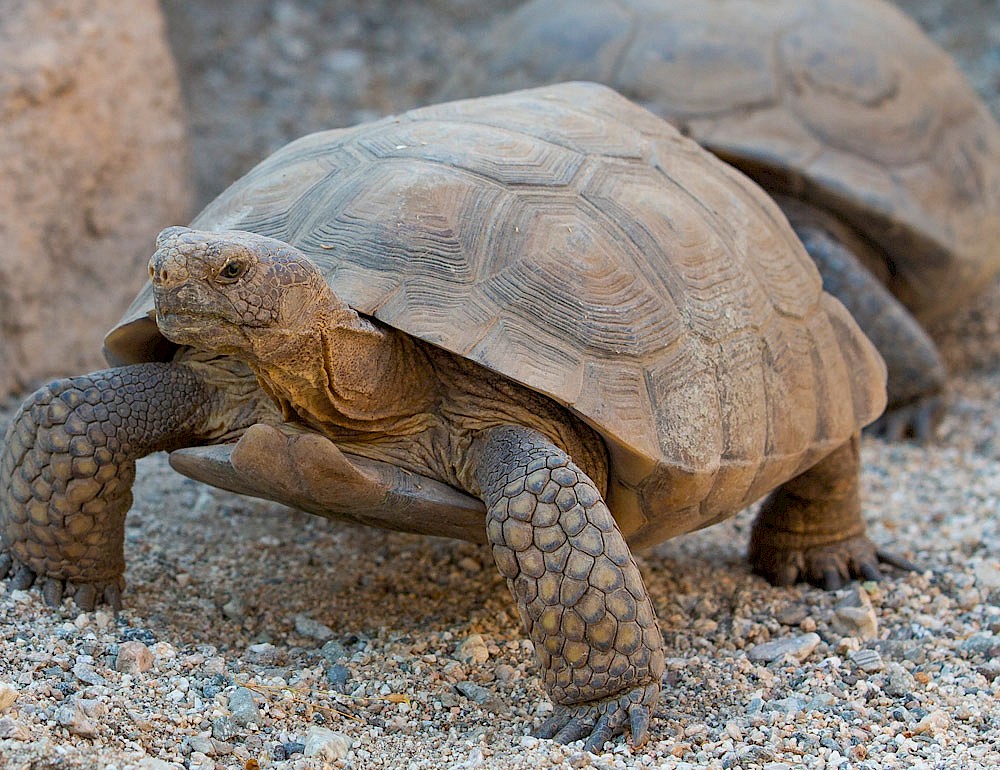Featured image credit: The Living Desert Zoo and Gardens
Groundhog Day, the annual tradition you sort of forgot was a thing, is coming up on February 2. And while the rest of the U.S. (and, believe it or not, Canada) will have to wait until then for the prophetic Punxsutawney Phil to predict the coming of spring with his startling shadow, California moves at its own pace. Or, should we say, Mojave Maxine’s pace. And being that Mojave Maxine is a desert tortoise, that pace can be a bit slower.
Update:
Spring sprung early in 2024… at least according to Mojave Maxine. She emerged from her seasonal slumber to greet the “spring” on January 30 at 10:10am. Just 15 days after the original publication of our blog! We guess Maxine is in the “get stuff done” spirit this year. We can relate! The winning schools for the 2024 contest were:
- Louis Vandermolen Elementary (Riverside County)
- Yucca Mesa Elementary (San Bernardino County)
- Sea View Elementary (Imperial County)
Nature’s Cutest Alarm Clock
If you were to visit Palm Springs’ sprawling The Living Desert Zoo and Gardens today, you’d have no chance of seeing Mojave Maxine. But she’s there. Nestled deep beneath the dust and gravel, the 45-year-old desert tortoise is right at home. And she likely won’t be coming out for a while. Feel the envy.
While this desert tortoise is pretty much doing what desert tortoises do, Southern California waits for Mojave Maxine with anticipation. Because she not only alerts us to the oncoming warmer weather. She also sets the gauge for wild desert tortoises across the region, informing climate scientists, biologists, and environmentalists.
Brumation Versus Hibernation
Like other desert tortoises, Mojave Maxine weathers the colder months by entering a state called brumation. It’s a bit like hibernation. Both brumation and hibernation are states of seasonal dormancy, after all. So what makes them different?
- Cold-blooded creatures undergo brumation whereas warm-blooded animals undergo hibernation.
- Brumation usually doesn’t last as long as hibernation.
- Brumating animals awaken occasionally to eat and drink whereas hibernating animals stay in their dormant state.
- Animals require less food prior to entering the dormant state of brumation than hibernation.

Maxine usually joins her fellow tortoises in entering brumation in late November. Snuggled up in their cozy burrows, they won’t resurface until the early spring.
Mojave Maxine Keeps a Loose Schedule
That’s not to say Mojave Maxine is opposed to arriving unfashionably early. Lured by the promise of fresh wildflowers, her favorite meal, she’s emerged from her lair as early as January. To date, January 18 holds the record for her earliest appearance. And while she’s much more likely to rise and shine in late February or early March, she sometimes emerges as late as April.
The predictable but not too predictable nature of Mojave Maxine’s waking has given rise to an annual contest for area students. This year, The Living Desert is inviting students from kindergarten to grade 12 to guess the exact date and time Maxine will emerge from her burrow.

The winning guess nets free t-shirts for the whole class and a visit to The Living Desert. However, the contest is only open to students in the counties of San Bernardino, Imperial, and Riverside. Full details can be found at The Living Desert’s site.
It’s Not Easy Being a Desert Tortoise
The Living Desert hopes that Mojave Maxine will bring much-needed attention to the plight of the desert tortoises that have roamed Southern California for tens of thousands of years. Sadly, it’s estimated that there are more desert tortoises in captivity today than roaming free in the wild. A number of factors have contributed to their endangered status, chief among them:
- Illegal trafficking for the pet trade
- Urban development
- Off-road vehicles
- Raven predation
- Infections of the upper-respiratory system
How to Meet Mojave Maxine

Visiting Mojave Maxine for yourself is obviously difficult at the moment. But when she wakes from her beauty sleep, you can meet her at Palm Springs’ Living Desert Zoo and Gardens. A proud nonprofit and accredited member of the Association of Zoos and Aquariums, the Living Desert has been a staple of the Palm Springs experience since 1970.
But for now, we’ll leave her to her slumber. After all, she carries the weight of Southern California’s seasons on her shell. And, despite the ridiculously great weather that spoils us year round, that’s a lot of responsibility for one tortoise!


